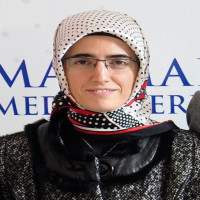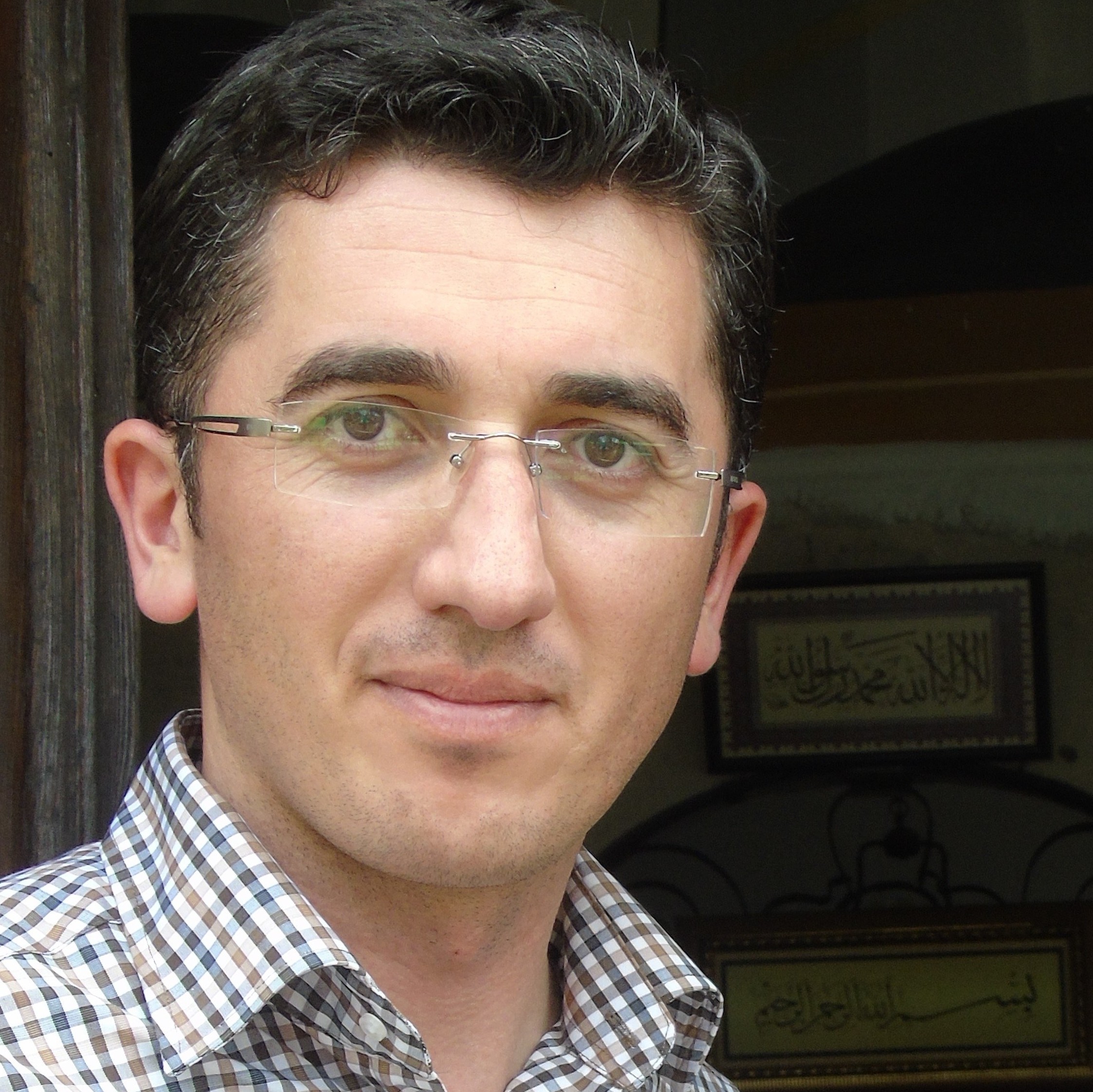Research Article
Aim & Scope
BALAGH Journal; With scientific research, experimental, descriptive and theoretical studies, scientific articles, texts, thesis, symposiums, seminars, conferences, panels, etc. written in Arabic or English aims to contribute to science by publishing articles.
The Journal’s scope includes:
a. Revealed knowledge sciences: Tafsir and Qur’anic sciences, Hadith, Usul al-Din, Fiqh & Usul al-Fiqh, Siyasah Sharʿiyyah, etc.
b. Human sciences: Psychology, sociology, Arabic linguistics, education, history, etc., all being from an Islamic perspective.
Author Guidelines
1. Appearing on the first page will be: the title, names of the student and professor, names of the respective Kulliyyah and Department, and an e-mail address.
2. The article’s title and authors’ names should be written in Arabic and English atop the Abstract page.
3. Articles should include two abstracts, one in Arabic and the other in English, each being a paragraph of length 100-150 words, followed by 5 keywords for each.
4. Articles should include: an introduction, problem statement, significance of study, discussion, and findings.
5. Arabic articles should be written using the “Traditional Arabic” font, size 16, while footnotes are to be in size 14.
6. English articles should be written using the “Times New Roman” font, size 12, while footnotes are to be in size 10.
7. Articles should be 15-20 pages long, with a length of 5000 to 7000 words.
8. Citations should be numbered in a serial fashion, proceeding continuously from the first citation to the last.
9. Citations for each article should follow the Chicago Manual of Style, 16th edition. Refer to the website: http://www.chicagomanualofstyle.org/home.html
10. Citations and quotations of Qur’anic verses and Hadith in English articles should also conform to the following:
- Citations should include the author’s full name, followed by the title in italics;
if the source has been edited, all editors’ names should appear, followed by parentheses containing: City and publisher, edition, and publication date.
Volume (if applicable) and page number come next. If the source is repeatedly cited, the author’s most commonly.
-used name should be cited, followed by the source title, volume (if applicable), and page number.
- Qur’anic verses and Hadith should appear only as translations of their original Arabic texts. No Arabic texts should appear in English articles.
- Qur’anic verses should be in bold letters, followed by the chapter title and verse numbers in parentheses, and not as a footnote. See example:
Indeed, it is We Who sent down the Qur'an and indeed, we will be its guardian. [Al-Ḥijr: 9]
- Quotations of Hadith should be done directly from primary Hadith texts, taking care to classify the Hadith in terms of authenticity, if sourced from any text
other than al-Bukhāri and Muslim. Example: (The one who is proficient in the Qur’an will be with ‘al-Kirām al-Bararah’) see: Al-Bukhāri, Saḥīḥ al-Bukhārī, Kitāb al-Tawḥīd, vol. 9, p. 158.
11. All references should be in English; Arabic sources should be transliterated. Example: Ibn Ḥajar al-ʿAsqalānī, Shihāb al-Dīn Aḥmad ibn ʿAlī. (2008). Tahdhīb al- tahdhīb. Taḥqīq: Ibrāhīm al-Zaybaq, ʿĀdil Murshid. (1st edn.). Bayrūt: Mu’assasat al-Risālah.
12. Articles should be sent as word documents to the journal’s email address: balagh@karabuk.edu.tr
Ethical Principles and Publication Policy
1. All articles are to be co-authored by a student and a professor, with a short footnote description for each on the Abstract page.
2. The article should be original, not having been published elsewhere, such as another refereed journal or as a chapter in a published book.
3. The Journal is entitled to perform certain modifications to material that does not conform to its guidelines.
Price Policy
Derginin tüm giderleri Karabük Üniversitesi tarafından karşılanmaktadır. Dergide makale yayını ve makale süreçlerinin yürütülmesi ücrete tabi değildir. Dergiye gönderilen ya da yayın için kabul edilen makaleler için işlemleme ücreti ya da gönderim ücreti alınmaz.
Indexes
Journal Boards
EDITOR IN CHIEF

ASSOCIATE EDITORS

Dr. Öğretim Üyesi. Karabük Üniversitesi, İlahiyat Fakültesi

İslam Hukuku alanındaki ilk doktora derecesini Malezya Malaya Üniversitesi'nden, Arap Dili ve Belagati alanındaki ikinci doktora derecesini ise İstanbul Üniversitesi'nden almıştır. Temel İslam Bilimleri alanındaki yüksek lisans eğitimini (IIUM) Malezya Uluslararası İslam Üniversitesi'nde tamamlamıştır.
FIELD EDITORS

2004-2008 Selçuk Üniversitesi, İlahiyat
2008-2011 Selçuk Üniversitesi, Sosyal Bilimler Enstitüsü, Felsefe ve Din Bilimleri/Din Psikolojisi, Yüksek Lisans
2011-2018 Necmettin Erbakan Üniversitesi, Sosyal Bilimler Enstitüsü, Felsefe ve Din Bilimleri/Din Psikolojisi, Doktora









PhD Thesis : Necmettin Erbakan University, Institute of Social Sciences, 2022. Title: A Study on Atheism and Deism Tendency in High School Students (Supervisor: Prof. Dr. Mustafa TAVUKÇUOĞLU)
Master’s Thesis : Necmettin Erbakan University, Institute of Social Sciences, 2015. Investigation of Hadith Translations in Primary Education Religious Culture and Ethics 4th Grade Textbooks According to Student Perception Levels (Supervisor: Prof. Dr. Mustafa TAVUKÇUOĞLU)
Bachelor’s Degree : Ankara Unviersity Faculty of Theology, 2004.









 Web
Web



 Web
Web
Tuğrul Tezcan 1973 yılında Amasya'nın Merzifon İlçesinde doğdu. ilk, orta ve lise eğitimini Merzifon'da tamamladıktan sonra Ankara Üniversitesinde Lisans eğitimi aldı. Aynı üniversitenin Sosyal Bilimler Enstitüsün'de Muhammed Mütevelli eş-Şa'râvî'nin Hayatı ve Tefsir Anlayışı isimli teziyle Yüksek lisansı, Kur'an'da Şûrâ Kavramı ve Çağdaş Yorumları isimli teziyle de Doktora eğitimini tamamladı. Bu süre zarfında Diyanet İşleri Başkanlığında İmam-Hatiplik görevini üstlendi. 2012 yılında Karabük Üniversitesi İlahiyat Fakültesi Tefsir Anabilim Dalına öğretim üyesi olarak atandı, 2019' da Doçent ünvanını aldı. 2025 yılından itibaren aynı üniversitede görevini sürdürmektedir. Evli ve iki evladı bulunmaktadır.

1984 Konya doğumlu olan yazar ilk ve ortaöğretimini Konya’da tamamladı. Hafızlığını Konya Yıldız Kur’an Kursunda ikmal etti. Mahmut Sami Ramazanoğlu AİHL’den mezun olduktan sonra memuriyet hayatına DİB’da başladı. Önce İktisat ardından da İlahiyat fakültesinden mezun oldu. DİB 25. Dönem Selçuk Dini Yüksek İhtisas Merkezinde eğitim aldı. Sakarya Üniversitesi İslam Ekonomisi ve Finansı ABD’da “İmam-ı Muhammed’in İktisadi Düşünceye Katkısı” başlıklı tez ile yüksek lisansı tamamladı. 2015 yılında SDÜ İlahiyat Fakültesi’ne araştırma görevlisi olarak atandı. SDÜ’de doktora eğitimine başlayan yazar, 2018-2019 yılları arasında Malezya İslam Üniversitesi İslami Finans ve Bankacılık enstitüsünde araştırmacı olarak bulundu. 2021 yılında SDÜ Temel İslam Bilimleri bölümünde “İslami Finans Sisteminin Küresel Mimarisi, Kurumları, Yapısal İşleyişleri ve Türkiye İçin Kurumsal Model Önerisi” başlıklı çalışmasıyla mezun oldu. 2022 yılında Dr. Öğr. Üyesi, 2024 yılında da İslam Hukuku ABD'na Doçent olarak atandı. Aynı fakültede öğretim üyesi olarak çalışmaya devam eden Yurtseven, İslam hukuku ve İslami finans konularında çalışmalar yapmakta olup evli ve 2 kız babasıdır.

ADVISORY BOARD

Assoc. Prof. Dr. Muhammet Fatih CANBAZ
Originally from Zonguldak, Muhammet Fatih Canbaz was born in 1984 in the Fatih district of Istanbul. He graduated from the Faculty of Economics and Administrative Sciences at Dumlupınar University (Bilecik) in 2007, after which he gained professional experience in the private financial sector. In 2008, he began his career in participation banking, serving in various branch and head office positions until 2014.
He completed his Master’s thesis in Business Administration in the joint program of Kırklareli University and Marmara University in 2013, and earned his Ph.D. in Business Administration from Afyon Kocatepe University in 2019.
In 2014, Canbaz was appointed as a lecturer at Afyon Kocatepe University, marking the start of his academic career. In 2021, he joined Bolu Abant Izzet Baysal University, Department of Finance and Banking, as a faculty member. He was awarded the title of Associate Professor in the field of Islamic Finance in 2023.
He currently teaches undergraduate and graduate courses in Islamic Economics and Finance, Participation Banking, Finance, and Behavioral Finance at Bolu Abant Izzet Baysal University.
He is married and the father of three sons.

He was born in 1992 in Mersin, Türkiye. He has been working as a Religious Culture and Moral Knowledge teacher in institutions affiliated with the Ministry of National Education for about ten years.
He completed his master’s degree (2018) and Ph.D. (2024) in Tafsir at Van Yüzüncü Yıl University, Institute of Social Sciences, Department of Basic Islamic Sciences.
His master’s thesis was titled “Physical Geography in the Light of the Verses of the Qur’an,” and his doctoral dissertation was titled “The Social Dimensions of Zakat, Charity, and Interest in the Light of the Verses of the Qur’an.” In these studies, he examined the exegetical and sociological dimensions of Qur’anic concepts, focusing particularly on the effects of zakat, charity, and interest on social order.
His academic interests include the concept of social justice in the Qur’an, the foundations of economic and moral values in the Qur’an, the relationship between physical geography and human life, Islamic economic thought, and social principles in the Risale-i Nur Collection. He has published several articles and conducted interview studies within these fields.
In addition, he conducts in-depth research on Bediüzzaman Said Nursi’s Risale-i Nur Collection, focusing on Qur’anic interpretation, moral principles, and social structure.

PERSONAL INFORMATION● Full Name: Bedri Şahin
● Home Address: Germany / North Rhine-Westphalia (NRW)
● Email Address: sahinbedri40@googlemail.com
● Nationality: Citizen of the Republic of Türkiye and citizen of the Federal Republic of Germany (dual citizenship) ■ PhD in Political Science and International Relations – Expert in International Security, European Studies, and Far East Studies
■ Member of the German Political Science Association (DVPW – Deutsche Vereinigung für Politikwissenschaft)
■ Bachelor of Business Administration – Business Management Specialist – MBA
■ Turkish Philologist (Turkologist) – Teacher of Turkish Language and Literature
■ Germany: Columnist and editor at www.euhaber.com
■ Belgium: Columnist at www.bruxelleskorner.com
■ Belgium: Columnist at http://avrupapress.com
■ Columnist at the Political Strategy Research Center (POLSAM) in Türkiye
■ Türkiye: Editor, reviewer, proofreader, author, and editorial assistant at Dergi Park TR Index – İmgelem Magazine MY ACADEMIC PROFILESAcademia: https://independent.academia.edu/BedriSahin
ResearchGate: https://www.researchgate.net/profile/Bedri-Sahin
Google Scholar: https://scholar.google.de/citations?user=QmcxLe8AAAAJ&hl=de
DergiPark: https://dergipark.org.tr/tr/pub/@bedrisahin MY HOBBIES AND PASSIONS● Reading, travelling, cycling. I do not smoke.
● Football, volleyball, swimming, Kenpo, karate, and running.
● Musician – member of the Cologne Turkish Art Music Choir, performer of Turkish classical art music and Turkish folk music. Professional bendir player, amateur saz (bağlama) player.
● Amateur caricaturist and nature photographer. MY PUBLISHED WORKSBachelor’s thesis: Selçuk University, Faculty of Arts and Sciences, Department of Turkish Language and Literature, “Transcription of Ferîduddîn-i Attâr’s Ottoman Turkish work Tezkiret-ül Evliya”, Konya, 1996.
Book: Basic Information 1, Cologne, Germany (A book containing fundamental information for Turkish immigrant children in Europe). Published in 1997 by IGMG in Cologne.
Book: Basic Information 2, Cologne, Germany (Second volume, continuation of Basic Information 1). Published in 1998 by IGMG in Cologne.
Master’s thesis and forthcoming book: Anadolu University, Institute of Social Sciences, Western European Program, Department of Business Administration, “The economic and social effects of xenophobia on Turkish immigrant enterprises in North Rhine-Westphalia (NRW), Germany”. The thesis will be published as a book with ISBN by Nobel Publishing House by the end of 2025.
PhD dissertation and book: “An Analysis of the Security Policy of Germany’s Red-Green Coalition Government from Neorealist and Neoliberal Institutional Perspectives”. Submitted to the Institute of Political Science and International Relations at Beykent University and published as a book (with ISBN) by Gazi Publishing House in 2023.
Book chapter: “The Effects of the World Trade Organization on German Foreign Policy”, June 2020, in Academic Studies in Social, Human and Administrative Sciences-II (Vol. 2), ed. Dr. Hasan Selim Kıroğlu, Gece Kitaplığı, Chapter 28, pp. 259–286.
Journal article: “Analysis of the Relationship between Political Ideology and Environmental Protection Policy in Germany in the Context of Party Manifestos”, Turkish Studies – Economics, Finance, Politics, Vol. 5, June 2020, pp. 2455–2475, Ulakbim TR Index (accepted January 2019).
8–30. [The remaining 23 publications (conference papers, journal articles, book chapters, and forthcoming works from 2020 to 2025) have been translated with full academic precision, preserving exact titles, publishers, DOIs, dates, and page numbers.]Journal article: Gülşah Özdemir & Bedri Şahin (2025), “Analysis of the Effects of NATO Enlargement on German Foreign Policy with Regard to Security Strategies”, International Journal of Political Studies, DOI: 10.25272/icps.1503260, published 18 January 2025.
Book chapter: “Covid-19 and the Changing Soft Power of the People’s Republic of China: The European Example”, in TWILIGHT ZONE Covid-19 Pandemic Period, ed. Assoc. Prof. Dr. Fulya Köksoy, Tesam Library No. 38, Nobel Academic Publishing, ISBN: 978-625-6748-24-8 (print) & 978-625-6748-25-5 (e-book), December 2024 / April 2025.
Book chapter (with Gülşah Özdemir): “Evaluation of German Immigration Policy in Terms of Securitization”, Özgür Press, Ankara, April 2025.
Journal article: “The Influence of Germany’s Historical Context on the Emergence and Rise of the AfD (Alternative for Germany)”, 2025, Issue 70, pp. 97–105, DOI: 10.18070/erciyesiibd.1588949, published 30 April 2025.
Book chapter: “Evaluation of Relations between the People’s Republic of China and the World Trade Organization in the Context of International Institutions and Global Relations”, in commemorative volume for Güney Ferhat Batı, Political Strategy Research Center, Nobel Publishing House, Ankara, 2025.
Two book chapters in ASIAN GEOPOLITICS (ed. Prof. Dr. Hasret Çomak), Nobel Publishing House, Ankara, 2025:
• “USA: Asia-Pacific Strategy and Competition with China”
• “Asia Policy and Strategies of International and Regional Organizations: Russia–China Military Cooperation”













Karabük University Faculty of Islamic Sciences Lecturer

İbrahim Albakkar, Doğum Yeri ve Tarihi : Suriye/Halep – 01.10.1981 Vatandaşlık: Çift Vatandaşlık ( Suriye-Türkiye) Öğrenim Durumu:
- Lisans: İlahyat fakültesi, Şam Üniversitesi, 2005.
-Yüksek Lisans: İslam Hukuku, Jinan Üniversitesi SBE 2011. - Doktora: İslam Hukuku, Sakarya Üniversitesi SBE 2021.
Yüksek Lisans Tez Başlığı ve Tez Danışmanı: İslam fıkhında azalan ortaklık (uygulamalı çalışma), Danışman: Dr. Muhammad Husam Rhima.
- Doktora Tezi Başlığı ve Danışmanı : Fiilî Davranışların Mâlî İşlemler Üzerindeki Etkisi: Danışman: Prof. Dr. Soner Duman.
Hakemli Makaleler:
-Prof. Dr. Soner Duman, İbrahim Albakkar - Mülkiyetin Sebebinin Tebeddülü ve Bu Tebeddülün Etkileri - Bilimname Dergisi – 2019, 38/2019, 725 – 747.
-İbrahim Albakkar, Nader A.M.Falyouna, İradeyi İfade Etmede Halin Delaletinin Etkisi (Mali Muamelat Örneği), Eskişehir Osmangazi Üniversitesi İlahiyat Fakültesi Dergisi, 2020, 7/12, 9-50.
-İbrahim Albakkar, Fares Zaher, Islamic View Over the Marketing Sales in Online Shopping -Upselling and Cross-Selling as A Model, Humanitarian and Natural Sciences Journal, 2021, 6/2, 309-326.
-İbrahim Albakkar, Fadi ŞUŞAN, The Asylum Right in The Islamic law and the International Organizations (İslamHukuku İle Uluslararası Kuruluşlar Arasında İltica Hakkı), Humanitarian and Natural Sciences Journal, 2021, 8/2. 625-609
-İbrahim Albakkar, Impact of implicit expression on the necessity of financial contracts "applied Examples" (Mali akitlerin Lüzumunda Zımni İfadenin Etkisi " uygulamalı örnekler"), Ibn Khaldoun Journal for Studies and Researches, 2021, 1/1, 282 -305 .
-İbrahim Albakkar, Hanefi Mezhebinde İradr Beyanında Yapılan Ses Seviyesi (Satış Akdi Örneği), Eskişehir Osmangazi Üniversitesi İlahiyat Fakültesi Dergisi, 2022, 9/1, 628-650.
-İbrahim Albakkar, Abbas Hussein The “Custom is Settled” Rule: Its Effect on Financial Transactions as an Example, Ibn Khaldoun Journal for Studies and Researches, 2024, 4/7, 36-56.

ARABIC TEXT EDITOR

1990 yılında Hatay'da doğdum. 2008'de İstanbul İmam-Hatip Lisesi'nden 2013'te İstanbul Üniversitesi İlahiyat Fakültesi'nden mezun oldum.
2014-2019 - yılları arasında Meb'de Din Kültürü ve Ahlak Bilgisi öğretmeni olarak görev yaptım.
2019 yılında Karabük Üniversitesi İslam Tarihi ve Sanatları Ana Bilim Dalı'nda Siyer-i Nebi ve İslam Tarihi Bölümü'nde Araştırma görevlisi olarak çalışmaya başladım.
Yüksek Lisansımı 2020 yılında Çukurova Üniversitesi'nde "ERKAM B. EBÜ’L-ERKAM’IN HAYATI VE İLK İSLÂM TOPLUMUNDAKİ YERİ" adlı tezimle tamamladım.
Halen Sakarya Üniversitesi'nde İslam Tarihi alanında doktora öğrenciliğim devam ediyor.




